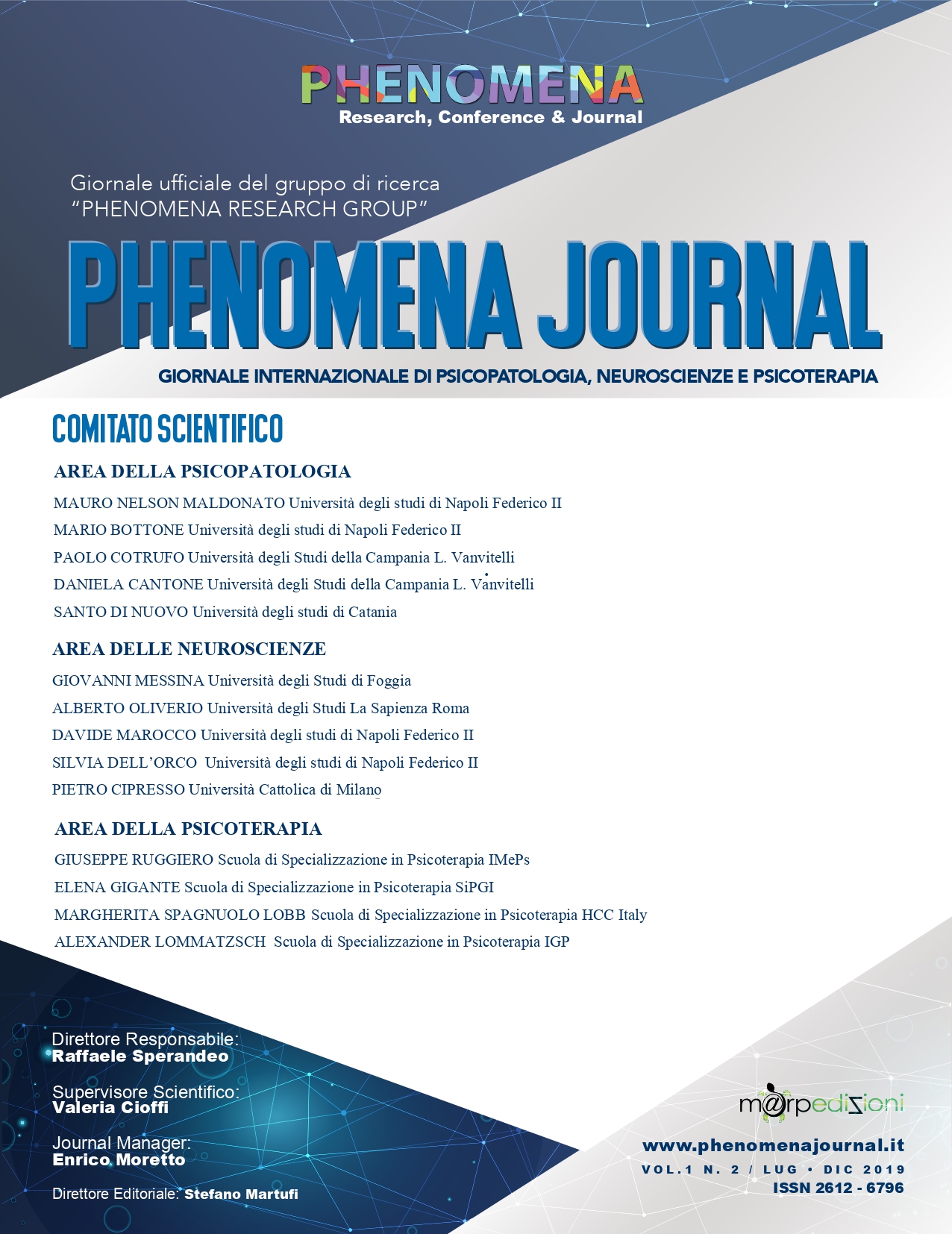The integration of Cognitive-Behavioral and Gestalt techniques in the work with the Autistic Spectrum
Published 2019-12-05
How to Cite
Abstract
The proposal of integration between cognitive-behavioral and gestalt techniques arises from the need to design an intervention line that respects precise criteria both in theory and in practice, for the psychotherapist in the work with the subjects with autism. The work done with the disabilities requires continuous strategies to be reinvented and sewed on the patient in the "here and now". All this seems to be essential from the integrated approach, which offers continuous ideas and confirmations, not only on a theoretical but above all practical level. The integration into the technique consists precisely in the design of a work plan that allows work on several fronts, considering the totality of the subject and his needs, framing it in a specific moment of its development, in relation to the environment and the caregivers. Cognitive-behavioral techniques referring to the applied analysis of A.B.A. they integrate with the Gestalt intervention, the levels of experience together with the contact functions allow the construction of a clear and functional intervention protocol. The application of these integrated methods allows us to carefully articulate the work of the psychotherapist and other professionals in helping relationships, providing a safe container for the family and the child, for a global management.
References
- Cartacci, F. (2002). Bambini che chiedono aiuto: l'ascolto e la cura nella terapia dell'esperienza. Unicopli.
- Ligotti, C., & Roccella, M. (2005). Autismo e disturbi generalizzati dello sviluppo. Metodi e strategie di intervento educativo-abilitativo.
- Spagnuolo Lobb, M. (2015). Il sé e il campo in psicoterapia della Gestalt. Quaderni di Gestalt, 2(2), 5-8.
- Barale, F. R. A. N. C. E. S. C. O., &Ucelli di Nemi, S. (2003). L’adulto con autismo: una introduzione. Νοος-Aggiornamenti in psichiatria, 9, 273-284.
- Di Pietro, M., & Bassi, E. (2013). L’intervento cognitivo-comportamentale per l’età evolutiva. Trento, IT: Erickson.
- Ricci, C., Magaudda, C., Carradori, G., Bellifemine, D., & Romeo, A. (2014). Il manuale ABA-VB-AppliedBehavior Analysis and VerbalBehavior: Fondamenti, tecniche e programmi di intervento. Edizioni Centro Studi Erickson.
- Micheli, E., & Zacchini, M. (2009). Verso l'autonomia: la metodologia TEACCH del lavoro indipendente al servizio degli operatori dell'handicap. Vannini.
- Evolufiva, C. A. E., & Marche, R. (2016). AppliedBehavior Analysis e VerbalBehavior: insegnare la comunicazione funzionale. Falconara.
- Polster, E., &Polster, M. (1986). Terapia della Gestalt integrata: Profili di teoria e pratica. Giuffrè.
- Perls, F., Hefferline, R. F., &Goodman, P. (1971). Teoria e pratica della terapia della Gestalt.Roma: Astrolabio.
- Oaklander, V. (1999). Il gioco che guarisce: la psicoterapia della Gestalt con bambini e adolescenti. EPC.
- Iacono D., Maltese G. (2012). Come l’acqua. Per un’esperienza gestaltica con bambini tra rabbia e paura. Il Pozzo di Giacobbe.
- Ginger, S., & Ginger, A. (2004). La Gestalt. Terapia del «con-tatto» emotivo. Edizioni Mediterranee.

